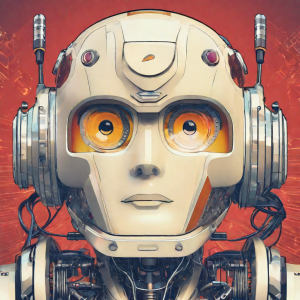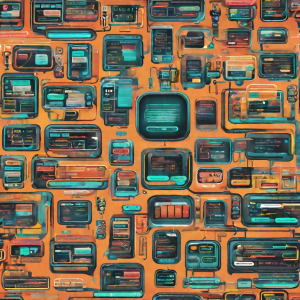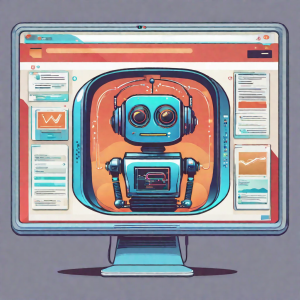Chatbots are dominating the AI world right now! With exciting new models like tome ai, ChatGPT going viral, it seems everyone is curious about these conversational AIs.
In this epic blog post, we’ll compare the top 3 chatbot contenders – ChatGPT, Claude, and the Anthropic AI assistant – across crucial categories to see how they stack up. Time for an old fashioned bot battle! ?
Brief Background on the Chatbots
First, a quick intro to our AI competitors:
ChatGPT: Launched by OpenAI in 2022, ChatGPT is powered by a vast general knowledge model trained on dialog. Known for human-like responses.
Claude: Created by Anthropic, Claude is focused on harmless, helpful dialog. Leverages a novel Constitutional AI approach.
Anthropic Assistant: Anthropic’s flagship AI assistant using Constitutional AI to be harmless and honest. The Claude bot demonstrates a portion of its capabilities.
Now let’s compare these bots across some key factors:

Conversation Ability and Personality
In terms of natural conversation skills, ChatGPT leads with its remarkably human-like tone and eloquent responses. Claude and Anthropic exhibit more robotic, sterile personalities.
However, Claude offers a wider range of emoji reactions to express emotions, from ? to ?. ChatGPT only provides minimal ?? reactions.
For harmless conversation, Claude and Anthropic have the edge by avoiding toxic responses found in ChatGPT.
Knowledge and Reasoning
With its vast dataset training, ChatGPT demonstrates more expansive knowledge on topics like history, culture, and science trivia.
However, for logical reasoning like following arguments, Anthropic appears more capable of step-by-step explanation without veering off track.
Claude exhibits fairly limited knowledge outside of its Constitutional AI abilities. But all 3 bots can fail to provide credible sources.

Creativity and Language Use
ChatGPT shows amazing creative abilities, able to generate poems, stories, code, and more in an instant based on prompts. Its expressiveness has “wow factor”.
Claude and Anthropic fall short in leveraging language creatively. Responses tend to be dry and literal.
So for creative applications, ChatGPT is king while the others have room for improvement.
Speed and Responsiveness
Thanks to its massive model scale, ChatGPT suffers slow response times compared to Claude and Anthropic, often taking 10+ seconds to generate replies.
Claude and Anthropic deliver fast sub-second response times, resulting in more natural-feeling conversations. Their efficiency is impressive.
No lag makes a big difference in chat experience, giving the Constitutional AI bots the speed crown. ?
Accuracy and Factualness
ChatGPT frequently generates plausible-sounding but incorrect or nonsensical statements when pressed for factual answers. Its hallucinated responses present a big risk.
Anthropic Assistant emphasizes truthfulness and accuracy in its responses. When unsure, it will acknowledge limitations.
Claude plays it safer by avoiding speculative responses, though this results in more limited capabilities.
For reliable information, Anthropic’s Constitutional AI approach prevails.
Bias, Ethics and Safety
Thanks to its unfiltered training data, ChatGPT exhibits concerning biases around race, gender, religions, disabilities and more based on prompts.
Anthropic Assistant and Claude were developed with algorithmic techniques designed to minimize biases and toxicity, resulting in more inclusive responses.
Anthropic also focused on Constitutional AI – respecting human autonomy through truthfulness, honesty, and avoiding harm.
So the Constitutional bots lead in ethical design.
Use Cases and Applications
ChatGPT is unmatched when it comes to creative applications like generating stories, poems, code and articles. Its strong suit is imaginative text creation.
For productivity, Claude and Anthropic may be better for research, summarization, and semantic search to find useful information.
Anthropic also shows promise for grammatically correcting text and analyzing arguments.
So the ideal bot depends on your specific use case needs.
And that’s a wrap on our AI bot battle! While ChatGPT leads in several areas like conversational ability and creativity, Constitutional AI models like Anthropic aim higher when it comes to accuracy, ethics and real-world usefulness.
The key is identifying the strengths of each bot and choosing the right one for your particular application. But they all have room for improvement on the path to developing beneficial AI assistants! What chatbot are you betting on?
Chatbots have become increasingly popular in recent years, providing businesses with an efficient way to communicate with customers. In this presentation, we will be discussing and contrasting three different chatbot models: Tome AI, Claude, and ChatGPT. We will also explore how small businesses can leverage these chatbots to improve their customer service and overall operations.
Features
Tome AI offers a range of features including natural language processing, sentiment analysis, and machine learning capabilities.
Use Cases
Tome AI can be used for customer service, lead generation, and sales support.
Claude
Claude is a chatbot platform that uses machine learning and natural language processing to provide a conversational experience for users. It is designed to be easy to use and can be integrated with a variety of platforms, including Facebook Messenger, Slack, and Telegram.
Features
- Easy to use interface for building chatbots
- Integration with popular messaging platforms
- Machine learning and natural language processing capabilities

ChatGPT
Overview
ChatGPT is an AI-powered chatbot platform that leverages state-of-the-art natural language processing (NLP) technology to deliver human-like conversations. It can be integrated with various communication channels, including Facebook Messenger, WhatsApp, and Slack.
Features
- Multi-lingual support
- Customizable chatbot workflows
- Intelligent routing to live agents
- Real-time analytics and reporting
**Comparing Chatbot Models: Tome AI vs Claude vs ChatGPT – A Comprehensive Exploration**
In the ever-evolving landscape of artificial intelligence, chatbots have emerged as powerful tools for enhancing user experiences and automating various tasks. In this comprehensive guide, we will delve into the intricacies of three prominent chatbot models: Tome AI, Claude, and ChatGPT. Buckle up as we embark on a journey to compare and contrast these models across a spectrum of factors.
## Understanding the Foundations
### **Introduction to Chatbot Technology**
Before we dive into the specifics, let’s establish a foundational understanding of chatbot technology. Chatbots are AI-powered programs designed to simulate conversation with users, providing information or assistance through text or voice interactions.
### **The Evolution of Chatbots**
Chatbots have come a long way from rule-based systems to sophisticated models driven by machine learning and natural language processing. Understanding this evolution is crucial to appreciate the capabilities of modern chatbots.
## Unveiling Tome AI
### **Tome AI Overview**
Tome AI prides itself on a robust natural language understanding (NLU) engine, emphasizing context-aware conversations. Let’s explore its key features, use cases, and how it differentiates itself in the market.
### **Strengths of Tome AI**
– **Context Retention:** Tome AI excels in retaining context during conversations, providing a more coherent user experience.
– **Multilingual Support:** A comparative analysis of its multilingual capabilities, ensuring global accessibility.
– **Customization and Integration:** Explore how Tome AI allows for customization and seamless integration into diverse platforms.
### **Potential Drawbacks**
– **Training Complexity:** Assess the learning curve for developers when training the model.
– **Scalability Challenges:** Investigate how Tome AI handles scalability issues, especially in high-demand scenarios.
## Meet Claude
### **Claude: An Overview**
Claude positions itself as a versatile chatbot solution with a focus on simplicity and user-friendliness. Explore its architecture, use cases, and how it caters to various industries.
### **Claude’s Unique Selling Points**
– **User-Friendly Interface:** Evaluate how Claude simplifies the development process for users with varying technical expertise.
– **Industry-Specific Adaptability:** Analyze Claude’s adaptability to specific industries, showcasing its versatility.
– **Cost-Effectiveness:** Delve into the pricing structure and cost-effectiveness compared to competitors.
### **Potential Limitations**
– **Advanced Customization:** Examine the extent to which Claude allows advanced customization for developers.
– **Natural Language Understanding:** Assess how well Claude comprehends and responds to nuanced user queries.
## ChatGPT in Focus
### **ChatGPT: A Deep Dive**
As an OpenAI creation, ChatGPT gained prominence for its language generation capabilities. Let’s explore its architecture, the GPT-3 model, and the unique features that set it apart.
### **Advantages of ChatGPT**
– **Language Sophistication:** Analyze the naturalness and coherence of language generated by ChatGPT.
– **Versatility in Applications:** Explore the various domains where ChatGPT has demonstrated efficacy.
– **Integration Capabilities:** Assess how ChatGPT integrates with existing systems and platforms.
### **Limitations to Consider**
– **Handling Ambiguity:** Investigate how ChatGPT deals with ambiguous queries and user instructions.
– **Ethical Considerations:** Discuss potential biases and ethical concerns associated with large language models.
## Comparative Analysis
### **Performance Metrics**
– **Accuracy:** Evaluate the accuracy of responses generated by each model through benchmark testing.
– **Latency:** Examine the response time of each model under different loads and scenarios.
– **Scalability:** Assess how well each model scales in terms of user interactions and data processing.
### **User Experience**
– **Conversational Flow:** Analyze the fluidity and naturalness of conversations facilitated by each model.
– **User Engagement:** Explore how users respond to and engage with the chatbots over extended interactions.
### **Development and Integration**
– **Ease of Use:** Evaluate the user-friendliness of the development interfaces for each model.
– **Customization:** Examine the extent to which developers can tailor the behavior and responses of each chatbot.
– **Integration Complexity:** Assess the integration process with existing systems and platforms.
## The Future of Chatbots
### **Emerging Trends**
– **Advancements in NLP:** Explore ongoing developments in natural language processing that will shape the future of chatbots.
– **Voice and Multimodal Capabilities:** Discuss how chatbots are evolving to accommodate voice and multimodal interactions.
## Conclusion
### **Making Informed Choices**
– **Key Takeaways:** Summarize the strengths, limitations, and performance metrics of each chatbot model.
– **Decision Criteria:** Provide guidance on choosing the right chatbot based on specific use cases, scalability needs, and development requirements.
## References and Further Reading
### **Sources and Citations**
Ensure the credibility and reliability of information by providing a comprehensive list of sources and citations.
This exhaustive exploration aims to equip you with the knowledge needed to make informed decisions when choosing a chatbot model. Dive into the world of conversational AI, where Tome AI, Claude, and ChatGPT are pioneering the way forward. Whether you’re a developer, business owner, or AI enthusiast, this guide is your roadmap to understanding, comparing, and embracing the future of chatbots.
1. **What is Tome AI used for?**
– Tome AI is a versatile natural language processing (NLP) tool designed for various applications. It is primarily used for creating chatbots and virtual assistants that can engage in context-aware conversations. Additionally, Tome AI finds applications in sentiment analysis, language translation, and enhancing user interactions across different platforms.
2. **How to use Tome AI for free?**
– To use Tome AI for free, follow these steps:
– Navigate to the Tome AI website and sign up for a free account.
– Access the free tier or trial version if available.
– Explore the platform’s documentation and resources to understand the features and functionalities.
– Start building your chatbot or utilizing other NLP capabilities within the constraints of the free plan.
3. **Is Tome AI free or paid?**
– Tome AI offers both free and paid plans, providing users with flexibility based on their needs and usage requirements. The free plan typically comes with certain limitations, such as usage quotas and feature restrictions. Paid plans unlock additional capabilities, increased usage limits, and premium support.
4. **How do I export from Tome AI for free?**
– Exporting data from Tome AI may depend on the specific features available in the free plan. Typically, free plans may have limitations on exporting data, and more extensive export options may be available in paid plans. To export data from Tome AI for free:
– Log in to your Tome AI account.
– Explore the export options within the platform or refer to the documentation for guidance.
– If there are limitations on the free plan, consider upgrading to a paid plan for more extensive export capabilities.
Remember to review Tome AI’s terms of service and documentation for the most accurate and up-to-date information regarding usage, exports, and plan details.
Is Claude better than ChatGPT?
Claude has faster response times and is designed to provide harmless, honest answers. But ChatGPT has more human-like conversation abilities and creativity. Different models have different strengths.
Is there any AI better than ChatGPT?
Many experts argue Anthropic’s assistant built using Constitutional AI techniques is superior to ChatGPT in areas like accuracy, truthfulness, and avoiding harmful responses.
Is Claude better than GPT reddit?
On reddit, some users report Claude having more natural conversations and humor compared to GPT-3. But Claude’s knowledge limitations and lack of creativity are criticized.
What is the difference between Bing Chat and Claude?
Bing Chat uses a version of GPT tuned by Microsoft, while Claude is its own NLP model focused on harmless dialog. Bing aims to mimic ChatGPT’s capabilities.
The ideal chatbot depends on your priorities – accuracy, creativity, personality etc. Continued AI progress will yield both strengths and weaknesses to weigh. More.


